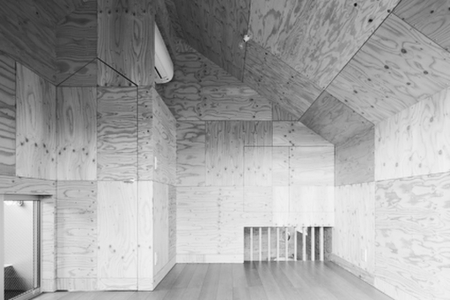手段のデザイン
接点の無い異なる複数のアクティビティー同士に囲まれた空間がオープンなパーソナルスペースになり、表層の不完全性により、アクティビティーは表層の外、建築の外で発生させるとし、表層の不完全性は敷地のコンテクスト/文脈からつくる、とした。
以前にも書いたが、不完全性のつくり方には、何かを足せる状態か、完全性が乱れたり崩れた状態の2つある。何かを足せる状態とは、例えると、茶会の度に設えを整える前の茶室であり、それは空っぽの状態と言っても良く、完全性が乱れたり崩れた状態とは、同じく茶室で例えると、シンメトリーが崩れた違い棚てあり、その崩れ方、乱れ方が見る者の心に働きかけてくる、心を動かす。
どちらの不完全性もアクティビティーが発生するので、2つの方法を使い分けたり、組合せることも可能だと思うが、見る者の心に働きかける方に興味がそそられ、シンメトリーが崩れり乱れた状態をつくり出すデザインをすることになるだろうが、デザインの完成が目的では無くて、その先の人の心に働きかけることが目的であるという所が、本来、デザインとはそういうもので、デザインが手段であるのがいい。
"Design of means"
The space surrounded by different activities without contact becomes an open personal space, and the imperfection of the surface causes the activity to occur outside the surface and outside the building, and the imperfection of the surface is the site It was made from context / context.
As I wrote before, there are two ways of creating imperfections: adding something, or breaking or breaking integrity. A state in which something can be added is, for example, a tea room before setting up for a tea ceremony, which may be said to be empty, and a state in which the integrity is broken or broken is similarly compared in the tea room The symmetry is broken into a different shelf, and how it collapses and disturbs works on the mind of the viewer, moving the mind.
Since both imperfections generate activity, I think it is possible to use or combine the two methods, but it is intriguing to work on the mind of the viewer and the symmetry is broken down The design will be created, but the place where the goal is not to finish the design but to work on the mind of the person ahead is basically such design, and the design is the means I hope there is.

